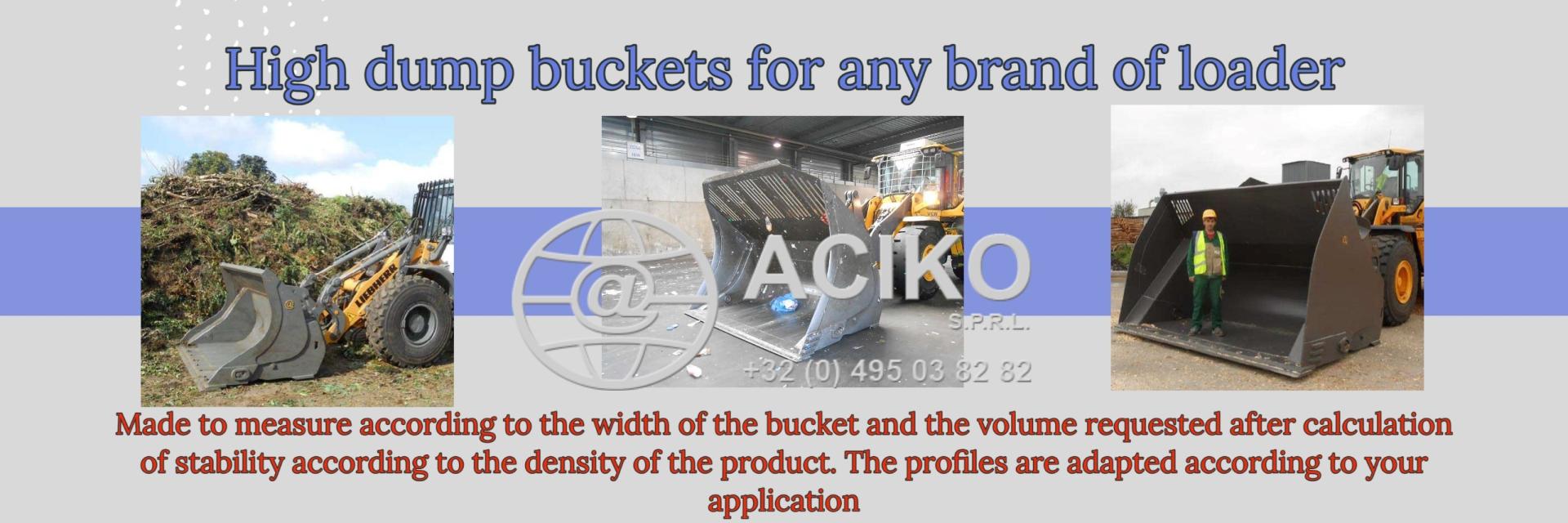R.E.News future Technology-Blockchain 3.0 and BIM Create A New Era of Traceable Data Exchange
 25/09/25-FR-English-NL-footer
25/09/25-FR-English-NL-footer
Blockchain 3.0 et BIM : vers une nouvelle ère de collaboration transparente
 Image-R.E.News©
Image-R.E.News©
Le secteur de la construction vit une révolution silencieuse. Alors que le Building Information Modelling (BIM) s’impose comme l’épine dorsale du chantier numérique, un problème persiste : comment gérer l’océan de données échangées entre architectes, ingénieurs, entrepreneurs et autorités sans sombrer dans la redondance, la confusion et les conflits ?
Les méthodes traditionnelles — basées sur des fichiers lourds, souvent transférés en intégralité malgré des changements minimes — montrent leurs limites. Même avec des standards comme l’IFC, la duplication, le manque de traçabilité et les problèmes de sécurité continuent de freiner les projets. Le cloud a apporté une solution temporaire, mais il ne répond pas à tous les défis. Quant à la blockchain, souvent perçue comme une panacée, elle s’est heurtée à un obstacle majeur : stocker des fichiers BIM massifs n’est ni pratique, ni efficace.
Une avancée majeure : l’approche tSDT
C’est dans ce contexte qu’une équipe de chercheurs menée par Lingming Kong, Rui Zhao, Chimay J. Anumba, Weisheng Lu et Fan Xue a ouvert une nouvelle voie. Leur méthode, baptisée traceable Semantic Differential Transaction (tSDT), change radicalement la donne.
Plutôt que de transférer des fichiers entiers, tSDT enregistre uniquement les différences au niveau sémantique entre les versions. Concrètement, cela signifie que chaque équipe peut savoir quoi a changé, quand et par qui, sans être noyée sous des données répétitives. Résultat : des échanges plus légers, plus rapides, et surtout parfaitement traçables.
openBIMdisk : la blockchain au service de la construction
Pour donner vie à cette approche, les chercheurs ont créé openBIMdisk, un disque virtuel propulsé par la Blockchain 3.0. Cet outil innovant permet d’échanger des données BIM de manière sécurisée et transparente, tout en assurant une gestion des versions et une traçabilité à l’échelle de chaque objet.
Les premiers tests sur un projet de construction modulaire sont impressionnants : seulement 0,007 % d’espace disque utilisé pour stocker les changements, et un temps de réponse quasi instantané de 5,3 millisecondes. Autrement dit : l’efficacité sans compromis.
Pourquoi Blockchain 3.0 ?
Si la Blockchain 1.0 a ouvert l’ère des cryptomonnaies et la 2.0 celle des smart contracts, la 3.0 élargit désormais son champ à des applications industrielles de grande échelle. Elle apporte scalabilité, interopérabilité et sécurité renforcée.
Dans un secteur aussi complexe que la construction — impliquant de multiples acteurs et réglementations — cette capacité à partager des données fiables, traçables et immuables constitue un véritable atout. Fini les zones d’ombre et les pertes de confiance : chaque modification est horodatée, chaque échange est sécurisé.
Des impacts qui vont bien au-delà des chantiers
L’adoption de tSDT et d’openBIMdisk pourrait transformer en profondeur les pratiques :
Moins de redondance : seuls les changements pertinents sont sauvegardés.
Plus de transparence : chaque acteur sait précisément qui a fait quoi et quand.
Sécurité renforcée : les données sensibles sont protégées contre toute altération.
Réactivité accrue : accès quasi immédiat aux versions mises à jour.
Pour les investisseurs et décideurs, cela signifie une réduction des risques et une confiance accrue dans l’intégrité des projets. Pour les équipes opérationnelles, c’est la promesse d’une collaboration plus fluide, moins sujette aux litiges.
Une nouvelle ère de confiance collaborative
Depuis toujours, la construction souffre de tensions liées à l’opacité des données : retards, litiges, responsabilités floues. En rendant chaque échange immuable et traçable, openBIMdisk devient un vecteur de confiance. Comme le souligne un analyste du secteur :
« Lorsque chaque acteur voit clairement ce qui a changé, le terrain des conflits se rétrécit, et celui de la coopération s’élargit. »
Et demain ?
Déjà saluée dans les pages de Frontiers of Engineering Management (2025), cette innovation pourrait aller bien plus loin. Demain, elle pourrait s’intégrer à l’intelligence artificielle pour anticiper l’impact des changements, ou encore se combiner aux jumeaux numériques pour un suivi en temps réel des projets.
De la modularité à la grande infrastructure, et jusqu’à la planification des villes intelligentes, openBIMdisk pourrait devenir l’ossature numérique de la construction du futur.
Conclusion : l’alliance du BIM et de la Blockchain 3.0
Avec tSDT et openBIMdisk, la construction entre dans une nouvelle ère : celle de l’efficacité et de la confiance. Loin de se limiter à la finance, la blockchain démontre ici son potentiel à transformer en profondeur un secteur clé de nos sociétés.
Ce n’est pas seulement une avancée technologique, c’est un nouveau langage de collaboration, où chaque donnée compte et où chaque acteur peut avancer avec une vision claire et partagée.
NJC.© Info Building Information Modelling Open BIM exchange on Blockchain 3.0 virtual disk: A traceable semantic differential transaction approach
------------------------------------------------------------------------------------------------------------------
 25/09/25-English
25/09/25-English
Blockchain 3.0 and BIM: Towards a New Era of Seamless Collaboration
 Image-R.E.News©
Image-R.E.News©
The construction industry is experiencing a quiet revolution. While Building Information Modeling (BIM) is establishing itself as the backbone of the digital construction site, one problem persists: how to manage the ocean of data exchanged between architects, engineers, contractors, and authorities without sinking into redundancy, confusion, and conflicts?
Traditional methods—based on large files, often transferred in their entirety despite minimal changes—are showing their limitations. Even with standards like IFC, duplication, lack of traceability, and security issues continue to hamper projects. The cloud has provided a temporary solution, but it doesn't address all the challenges. As for blockchain, often seen as a panacea, it has encountered a major obstacle: storing massive BIM files is neither practical nor efficient.
A Major Advance: the tSDT Approach
It is in this context that a team of researchers led by Lingming Kong, Rui Zhao, Chimay J. Anumba, Weisheng Lu, and Fan Xue has pioneered a new approach. Their method, called traceable Semantic Differential Transaction (tSDT), radically changes the game.
Rather than transferring entire files, tSDT records only the semantic differences between versions. In concrete terms, this means that each team can know what was changed, when, and by whom, without being overwhelmed by repetitive data. The result: lighter, faster, and, above all, fully traceable exchanges.
openBIMdisk: Blockchain for Construction
To bring this approach to life, the researchers created openBIMdisk, a virtual disk powered by Blockchain 3.0. This innovative tool allows for the secure and transparent exchange of BIM data, while ensuring version management and traceability at the level of each object.
Initial tests on a modular construction project are impressive: only 0.007% of disk space was used to store changes, and a near-instantaneous response time of 5.3 milliseconds. In other words: efficiency without compromise.
Why Blockchain 3.0?
While Blockchain 1.0 ushered in the era of cryptocurrencies and 2.0 that of smart contracts, Blockchain 3.0 is now expanding its scope to large-scale industrial applications. It brings scalability, interoperability, and enhanced security.
In a sector as complex as construction—involving multiple stakeholders and regulations—this ability to share reliable, traceable, and immutable data is a real asset. No more gray areas and no more loss of trust: every modification is time-stamped, every exchange is secure.
Impacts that extend far beyond construction sites
The adoption of tSDT and openBIMdisk could profoundly transform practices:
Less redundancy: only relevant changes are saved.
Greater transparency: everyone knows exactly who did what and when.
Enhanced security: sensitive data is protected against alteration.
Increased responsiveness: almost immediate access to updated versions.
For investors and decision-makers, this means reduced risks and greater confidence in project integrity. For operational teams, it promises smoother collaboration, less prone to disputes.
A new era of collaborative trust
Construction has always suffered from tensions related to data opacity: delays, disputes, and unclear responsibilities. By making every exchange immutable and traceable, openBIMdisk becomes a vector of trust. As one industry analyst points out:
"When everyone involved clearly sees what has changed, the scope for conflict narrows and the scope for cooperation expands."
And tomorrow?
Already praised in the pages of Frontiers of Engineering Management (2025), this innovation could go much further. Tomorrow, it could be integrated with artificial intelligence to anticipate the impact of changes, or even combined with digital twins for real-time project monitoring.
From modularity to large-scale infrastructure, and even smart city planning, openBIMdisk could become the digital backbone of the construction of the future.
Conclusion: The Alliance of BIM and Blockchain 3.0
With tSDT and openBIMdisk, construction is entering a new era: one of efficiency and trust. Far from being limited to finance, blockchain is demonstrating its potential to profoundly transform a key sector of our societies.
This isn't just a technological breakthrough; it's a new language of collaboration, where every piece of data counts and every stakeholder can move forward with a clear, shared vision.
NJC.© Info Building Information Modelling Open BIM exchange on Blockchain 3.0 virtual disk: A traceable semantic differential transaction approach
-----------------------------------------------------------------------------------------------------------------
 25/09/25-NL
25/09/25-NL
Blockchain 3.0 en BIM: Op weg naar een nieuw tijdperk van naadloze samenwerking
 Image-R.E.News©
Image-R.E.News©
De bouwsector maakt een stille revolutie door. Hoewel Building Information Modeling (BIM) zich vestigt als de ruggengraat van de digitale bouwplaats, blijft er één probleem bestaan: hoe beheer je de oceaan aan data die wordt uitgewisseld tussen architecten, ingenieurs, aannemers en overheden zonder te vervallen in redundantie, verwarring en conflicten?
Traditionele methoden – gebaseerd op grote bestanden, die vaak in hun geheel worden overgedragen ondanks minimale wijzigingen – laten hun beperkingen zien. Zelfs met standaarden zoals IFC blijven duplicatie, gebrek aan traceerbaarheid en beveiligingsproblemen projecten belemmeren. De cloud biedt een tijdelijke oplossing, maar lost niet alle uitdagingen op. Blockchain, vaak gezien als een wondermiddel, stuit op een groot obstakel: het opslaan van enorme BIM-bestanden is noch praktisch, noch efficiënt.
Een belangrijke vooruitgang: de tSDT-aanpak
In deze context heeft een team van onderzoekers onder leiding van Lingming Kong, Rui Zhao, Chimay J. Anumba, Weisheng Lu en Fan Xue een nieuwe aanpak ontwikkeld. Hun methode, genaamd traceable Semantic Differential Transaction (tSDT), verandert de spelregels radicaal.
In plaats van volledige bestanden over te zetten, registreert tSDT alleen de semantische verschillen tussen versies. Concreet betekent dit dat elk team kan weten wat er is gewijzigd, wanneer en door wie, zonder overspoeld te worden met repetitieve data. Het resultaat: lichtere, snellere en bovenal volledig traceerbare uitwisselingen.
openBIMdisk: Blockchain voor de bouw
Om deze aanpak tot leven te brengen, creëerden de onderzoekers openBIMdisk, een virtuele schijf die draait op Blockchain 3.0. Deze innovatieve tool maakt de veilige en transparante uitwisseling van BIM-gegevens mogelijk, terwijl versiebeheer en traceerbaarheid op objectniveau worden gegarandeerd.
De eerste tests met een modulair bouwproject zijn indrukwekkend: slechts 0,007% van de schijfruimte werd gebruikt om wijzigingen op te slaan en de responstijd was vrijwel direct: 5,3 milliseconden. Met andere woorden: efficiëntie zonder compromissen.
Waarom Blockchain 3.0?
Terwijl Blockchain 1.0 het tijdperk van cryptovaluta inluidde en 2.0 dat van smart contracts, breidt Blockchain 3.0 zijn toepassingsbereik nu uit naar grootschalige industriële toepassingen. Het biedt schaalbaarheid, interoperabiliteit en verbeterde beveiliging.
In een complexe sector als de bouw – met meerdere belanghebbenden en regelgeving – is deze mogelijkheid om betrouwbare, traceerbare en onveranderlijke data te delen een echte troef. Geen grijze gebieden meer en geen verlies van vertrouwen meer: elke wijziging krijgt een tijdstempel en elke uitwisseling is veilig.
Gevolgen die veel verder reiken dan alleen bouwplaatsen
De implementatie van tSDT en openBIMdisk zou de praktijk ingrijpend kunnen veranderen:
Minder redundantie: alleen relevante wijzigingen worden opgeslagen.
Meer transparantie: iedereen weet precies wie wat en wanneer heeft gedaan.
Verbeterde beveiliging: gevoelige gegevens worden beschermd tegen wijziging.
Snellere respons: vrijwel direct toegang tot bijgewerkte versies.
Voor investeerders en besluitvormers betekent dit minder risico's en meer vertrouwen in de projectintegriteit. Voor operationele teams belooft het een soepelere samenwerking, minder vatbaar voor geschillen.
Een nieuw tijdperk van collaboratief vertrouwen
De bouwsector heeft altijd al te kampen gehad met spanningen die verband houden met data-ondoorzichtigheid: vertragingen, geschillen en onduidelijke verantwoordelijkheden. Door elke uitwisseling onveranderlijk en traceerbaar te maken, wordt openBIMdisk een vector van vertrouwen. Zoals een analist in de sector opmerkt:
"Wanneer iedereen die erbij betrokken is duidelijk ziet wat er is veranderd, neemt de kans op conflicten af en neemt de kans op samenwerking toe."
En morgen?
Deze innovatie, die al werd geprezen in Frontiers of Engineering Management (2025), zou veel verder kunnen gaan. Morgen zou het kunnen worden geïntegreerd met kunstmatige intelligentie om de impact van veranderingen te anticiperen, of zelfs gecombineerd met digitale tweelingen voor realtime projectmonitoring.
Van modulariteit tot grootschalige infrastructuur en zelfs slimme stadsplanning, openBIMdisk zou de digitale ruggengraat van de bouw van de toekomst kunnen worden.
Conclusie: De alliantie tussen BIM en Blockchain 3.0
Met tSDT en openBIMdisk betreedt de bouw een nieuw tijdperk: een tijdperk van efficiëntie en vertrouwen. Blockchain beperkt zich niet alleen tot de financiële wereld, maar toont aan dat het de potentie heeft om een belangrijke sector in onze samenleving ingrijpend te transformeren.
Dit is niet alleen een technologische doorbraak; het is een nieuwe taal van samenwerking, waarin elk stukje data telt en elke stakeholder vooruit kan met een duidelijke, gedeelde visie.
NJC.© Info Building Information Modelling Open BIM exchange on Blockchain 3.0 virtual disk: A traceable semantic differential transaction approach
----------------------------------------------------------------------------------------------------------------
Date de dernière mise à jour : 24/09/2025
















